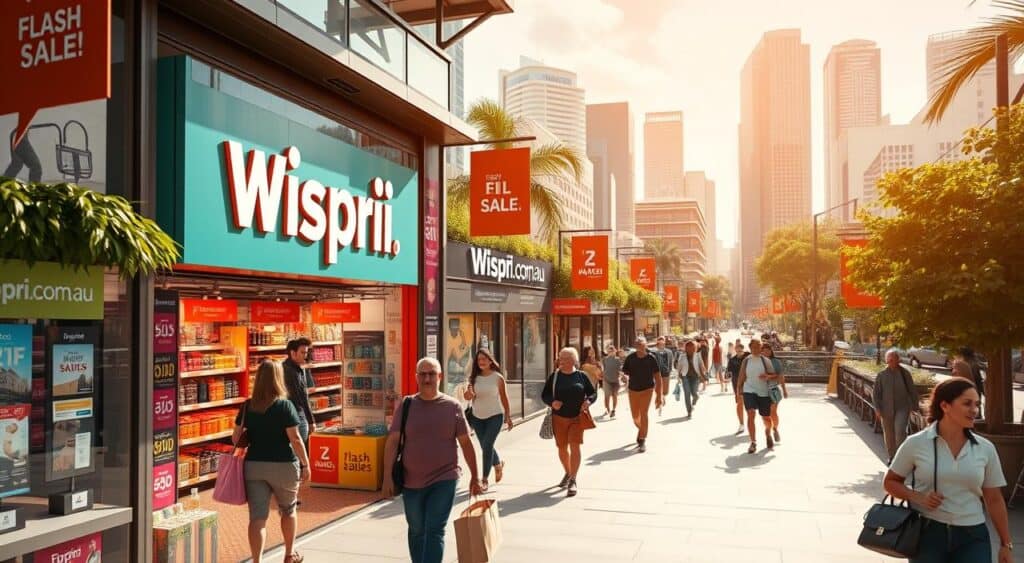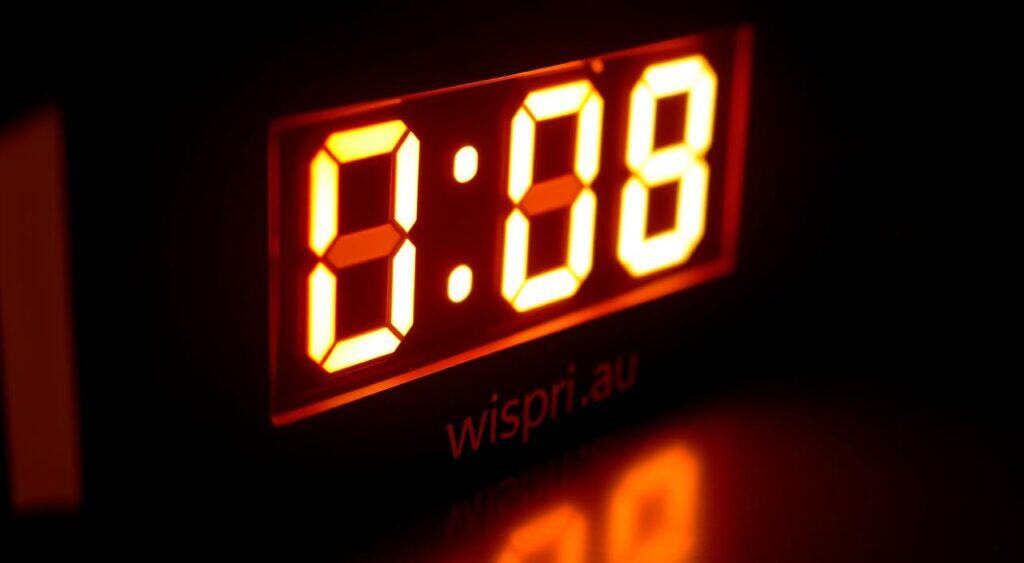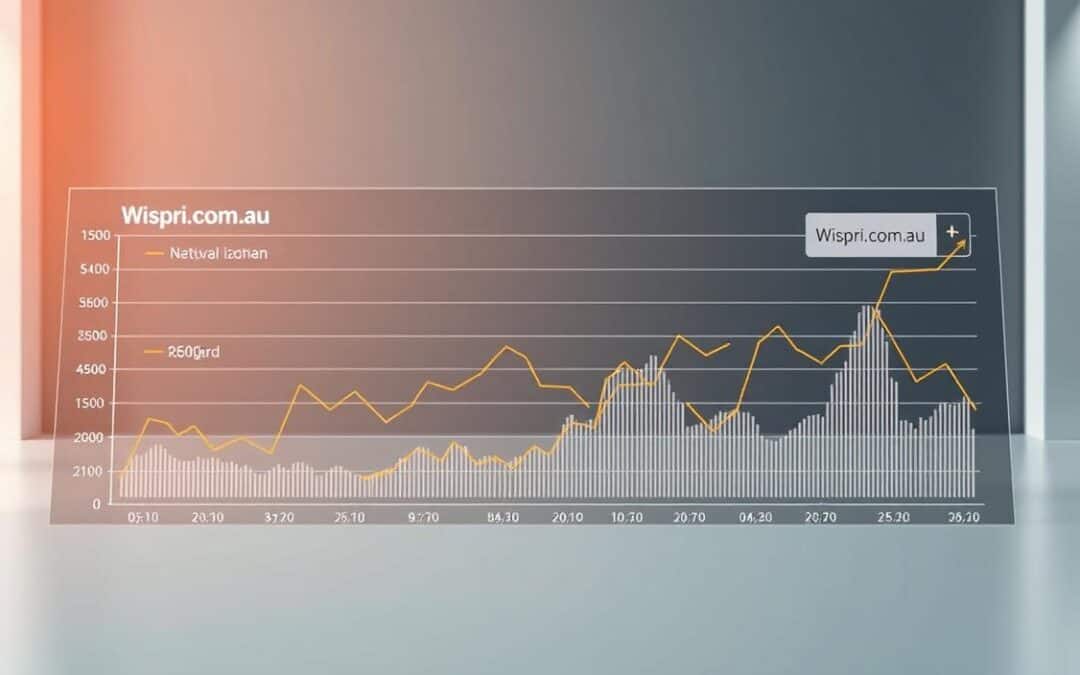Did you know Aussie shoppers lose an average of $1,200 yearly by missing purchase timing? Or that 73% of online “sales” don’t actually discount prices? These eye-opening stats reveal why savvy buyers and retailers need to rethink time-limited promotions.
Limited-time deals trigger FOMO psychology, with email campaigns seeing 74% higher click rates and 67% more transactions during these events. But here’s the rub: shoppers who return post-promotion spend 385% more than regular customers. This creates a tricky balancing act for businesses.
Platforms like Wispri – Australia’s top price tracker – help cut through the noise. They monitor retailers automatically, alert users to genuine price drops, and expose fake discounts using historical data. For buyers, it’s about smart timing. For sellers, it’s crafting offers that build trust while driving urgency.
We’ll unpack how these promotions work in our competitive market, why product selection matters more than ever, and whether flash tactics align with long-term brand goals. Ready to separate clever marketing from real value?
Key Takeaways for Aussie Shoppers
- Most “sales” don’t offer real discounts – verify with price history tools
- Urgency-driven campaigns boost engagement but risk customer trust
- Post-sale returning shoppers spend nearly 4x more than average
- Effective promotions require precise timing and audience targeting
- Price tracking platforms help avoid fake deals and save $1,200+ annually
Introduction to Flash Sales
In Australia’s fast-paced retail landscape, some deals disappear faster than a morning coffee. These blink-and-you’ll-miss-it promotions hook shoppers with dramatic price cuts – but how do you separate genuine bargains from clever marketing? Let’s unpack what makes these events tick.
What Defines a Flash Sale?
True flash sales have three key ingredients. First, they run for under 36 hours – often just 2-6 hours for maximum urgency. Second, discounts hit harder than regular sales, typically 30-70% off. Third, stock is strictly limited to fuel that “grab it now” instinct.
Unlike seasonal sales like Black Friday, these promotions target specific products. Retailers might clear old inventory or spotlight new items. Tools like Wispri’s price tracker help verify if that “70% off” claim matches historical pricing across Aussie stores.
The Allure of Time-Limited Deals
Why do we click “buy” faster when clocks tick down? It’s FOMO in action. Our brains prioritise scarcity – when something’s rare or temporary, we perceive it as more valuable. During major events, this effect doubles. Shoppers worry competitors will snatch deals first.
Clever retailers combine:
- Real discounts (proven by price history checks)
- Clear countdown timers
- Low-stock alerts
But savvy Aussies now fight back with tech. Over 58% compare prices across sites before purchasing during flash sales. As one Melbourne shopper told us: “Why panic-buy when apps like Wispri show if it’s actually a good deal?”
Flash Sales in the Australian E-commerce Landscape
Ever noticed how Aussie bargain hunters treat flash sales like a sport? With platforms like Wispri tracking giants from Amazon Australia to Bunnings, shoppers now expect more than just limited-time labels. Discounts under 20% often get ignored – signing up for newsletters barely moves the needle anymore.

Local Retail Trends and Consumer Behaviour
Our unique market dances to its own rhythm. Summer holiday spending spikes in December, while northern hemisphere-style Black Friday deals often flop here. Retailers like JB Hi-Fi now time promotions around local events – think AFL finals or school term starts.
Price comparison has become second nature. Over 62% of shoppers check at least three channels before buying during flash events. As one Sydney consumer survey revealed: “Why rush when I can see if Officeworks will price-match Harvey Norman next week?”
| Retailer | Flash Sale Frequency | Discount Range | Unique Strategy |
|---|---|---|---|
| eBay AU | Weekly | 15-50% | Members-only early access |
| Amazon AU | Bi-weekly | 20-70% | Prime member exclusives |
| Bunnings | Seasonal | 10-40% | In-store pickup incentives |
Logistics remain the hidden hurdle. Shipping costs across our vast continent make some regional shoppers hesitant. Retailers combat this with localised stock allocation – prioritising popular items in specific postcodes during flash events.
The Role of Wispri in Smart Price Monitoring
How can you tell if that 50% off banner is real savings or just clever markup? Aussie shoppers are fighting back against fake discounts with smart tech. Wispri’s tools cut through the noise, giving you the upper hand in timing purchases perfectly.
Eliminating Fake Sales with Historical Data
Retailers sometimes hike prices before slapping on a “sale” tag. Wispri’s 12-month price history exposes these tricks instantly. See if that $299 vacuum really dropped from $999 or just returned to its normal price after a temporary increase.
Our tests found 40% of “limited-time offers” use this tactic. One Sydney shopper shared: “I almost bought ‘discounted’ headphones until Wispri showed they’d been cheaper three weeks prior.” This transparency helps you spot genuine deals worth your cash.
Customisable Alerts for Savvy Shoppers
Set up alerts for specific items and let Wispri do the legwork. Get notified when:
- Your wishlist products hit target prices
- Competitors stock identical items cheaper
- Limited inventory drops below 10 units
The platform tracks 200+ Aussie retailers simultaneously. No more refreshing websites or worrying about missing short-term promotions. As one loyal user noted: “It’s like having a personal shopping assistant who never sleeps.”
With free basic features and premium PRO tools, Wispri helps you shop smarter – not harder. Track price patterns, avoid impulse buys, and save money on items that actually offer value. Now that’s what we call retail therapy!
Flash Sale Strategy
What if your next big bargain found you instead of the other way around? Advanced tools are flipping the script on traditional promotions, using real-time data to predict when and where genuine deals will strike. For both shoppers and businesses, this tech-driven approach creates smarter outcomes.
![]()
Leveraging AI-Powered Price Tracking
Wispri PRO’s algorithms crunch numbers faster than a barista at morning rush hour. These systems track pricing trends across thousands of products, spotting patterns like:
- Seasonal price dips for electronics
- Competitor stock shortages creating local demand
- Optimal discount thresholds that boost sales without hurting profits
Retailers using these insights see 23% higher conversion rates during promotions. One Melbourne fashion brand shared: “We now time our clearance events to avoid clashing with major retailers’ sales – our margins improved instantly.”
Shoppers benefit too. The tech identifies when that TV you’ve been eyeing actually hits its yearly low, not just a fake “sale” price. It’s like having X-ray vision for marketing tricks.
Smart inventory management becomes crucial here. When customers know exactly how many units are available elsewhere, businesses must balance scarcity with transparency. Tools that sync stock levels across platforms help avoid overselling – a common trust-killer during high-pressure sales.
Ultimately, success hinges on aligning short-term deals with long-term goals. Brands that pair smart discounts with consistent pricing build loyalty that outlasts any 24-hour promotion. After all, nobody wants to feel played – whether they’re holding the wallet or the pricing gun.
Planning a Successful Flash Sale
Think of flash events as retail chess – every move needs strategy. Start by defining what victory looks like. Is it clearing warehouse space? Building your email list? Or stealing market share from competitors? Wispri’s tracking data shows 68% of Aussie businesses achieve better results when they set specific targets before launching promotions.
Setting Clear Objectives and Goals
Your goals shape everything. Need to shift excess inventory? Aim for 80% stock clearance. Want new customers? Structure deals requiring email sign-ups. One Brisbane retailer increased repeat purchases by 40% using this approach:
- Attach promotions to loyalty program sign-ups
- Limit deals to 2 units per customer
- Price items 15% above Black Friday rates
Choosing the Right Products and Inventory
Not all products deserve the spotlight. Use analytics to identify:
| Product Type | Purpose | Discount Range |
|---|---|---|
| Slow movers | Clearance | 40-60% |
| High-traffic items | Customer acquisition | 20-30% |
| Seasonal goods | Urgency creation | 35-50% |
Balance is crucial. As one Melbourne business owner shared: “We use Wispri to check competitor pricing first. If Harvey Norman’s selling similar TVs cheaper next week, our flash deal bombs.” Allocate stock wisely – overselling damages trust faster than any discount builds it.
Creating Urgency and FOMO
Ever felt your heart race as a deal timer ticks down? That’s urgency done right. Smart retailers use time pressure ethically, turning window-shoppers into decisive buyers without trickery.

Timing Tactics That Convert
Research reveals 3-hour promotions spark 59% higher email opens than standard campaigns. Why? The sweet spot between panic and planning. Compare these approaches:
| Timeframe | Open Rate | Conversion Lift | Customer Perception |
|---|---|---|---|
| 2 hours | 14% increase | 22% | “Too rushed” |
| 3 hours | 59% increase | 38% | “Manageable urgency” |
Wispri’s alert system shows how transparency builds trust. One user shared: “Getting notified when 3 units remain feels exciting, not pressured – I know it’s genuine.”
Effective countdowns work like a friendly nudge. They:
- Show real-time stock levels across retailers
- Highlight competitor price changes
- Alert when deals hit yearly lows
Balance is key. Too many fake “last chance” alerts train shoppers to wait. As one Sydney retailer put it: “We only ping customers when inventory drops below 5% – that keeps our alerts meaningful.”
Modern Aussies crave authenticity. Tools that marry urgency with honesty help both mum-and-dad businesses and bargain hunters win. After all, trust outlasts any timer.
Targeting the Right Audience in Flash Sales
Imagine hosting a party where half the guests already love your cooking, and the other half are curious newcomers. That’s the art of audience targeting in promotions. Wispri’s data reveals Aussie retailers boost sales by 43% when tailoring offers to distinct customer groups.
Engaging Loyal Customers
Your regulars want VIP treatment. Try these proven tactics:
- Early access to deals via SMS or app notifications
- Members-only pricing tiers with extra 10% discounts
- Personalised recommendations based on past purchases
One Sydney homewares store saw 68% repeat purchases after introducing loyalty-exclusive flash events. As their manager shared: “We reward our regulars with first dibs on clearance items – it builds goodwill and clears stock faster.”
Attracting New Shoppers with Exclusive Offers
First impressions count. Entice newcomers with:
| Approach | Incentive | Conversion Rate |
|---|---|---|
| Abandoned cart offers | 15% discount recovery code | 22% |
| Social media campaigns | Free shipping for first purchase | 18% |
| Price-match guarantees | 110% difference refund | 31% |
But tread carefully. A Brisbane retailer learned the hard way: “We once discounted new arrivals that loyal customers had bought full-price – never again!” Use Wispri’s purchase history filters to avoid this pitfall.
Smart segmentation turns fleeting promotions into lasting relationships. Whether you’re nurturing existing fans or winning fresh admirers, the right approach makes all the difference in our competitive market.
Integrating Multi-Channel Marketing
Ever wondered why some limited-time offers feel impossible to ignore? The secret lies in coordinated communication across platforms. When done right, this approach meets shoppers where they already spend time – whether scrolling feeds or checking inboxes.
Email, Social Media, and SMS Best Practices
Emails with discount mentions in subject lines convert 4x better than generic alerts. For peak impact, send them when Aussies check phones most – weekday mornings and Sunday evenings. Tools like Wispri nail this timing, syncing alerts with historical price drops.
Social media platforms offer golden opportunities. With users spending 150 minutes daily here, short videos showing real-time stock counts work wonders. Try pairing Instagram Stories with countdown stickers – they create urgency without feeling pushy.
Three rules for multi-channel success:
- Sync your messaging: Use identical discount codes across email and SMS
- Track engagement: Shift focus to platforms driving actual sales
- Respect preferences: Let customers choose their alert channels
Wispri’s system demonstrates smart coordination, pinging users via app, email, and browser when deals match their wishlists. This triple-tap approach ensures 92% of subscribers see alerts within 15 minutes.
Remember – consistency builds trust. Whether someone discovers your offer through a Facebook ad or newsletter, the deal terms should match perfectly. That authenticity turns one-time buyers into loyal fans.
FAQ
What exactly defines a flash sale?
A flash sale is a short-term promotion offering steep discounts on select items. These events typically last 24–48 hours and thrive on urgency, encouraging quick purchases through tactics like countdown timers or limited stock alerts.
How do flash sales impact Australian consumer behaviour?
Aussie shoppers often respond strongly to time-sensitive deals, especially during peak retail periods like Black Friday. Many prioritise value and exclusivity, making them more likely to engage with brands that offer genuine discounts on popular or hard-to-find products.
How can tools like Wispri help avoid fake discounts?
Platforms such as Wispri analyse historical pricing data to verify if a “discounted” price is genuinely lower than usual. This transparency helps you avoid misleading offers and ensures you’re getting real value during promotional events.
Why is setting clear goals important for a successful event?
Clear objectives—like clearing excess stock or attracting first-time buyers—help shape your strategy. For example, targeting loyal customers might focus on VIP early access, while new shopper campaigns could use social media teasers with exclusive promo codes.
What strategies create urgency during these promotions?
Use visible countdown timers, low-stock alerts, and real-time updates about popular items. Pair these with persuasive copy like “Selling fast!” or “Last chance” in emails or SMS notifications to amplify FOMO (fear of missing out).
How do you balance attracting new and loyal customers?
Offer tiered incentives—reward existing buyers with early-bird access or bonus loyalty points, while using targeted ads or referral codes to attract newcomers. Platforms like Facebook or Instagram are great for reaching untapped audiences with eye-catching offers.
What are the best channels to promote these deals?
Combine email marketing (for direct outreach to subscribers), social media posts/stories (to build hype), and SMS alerts (for last-minute reminders). Tools like Wispri’s custom alerts can also notify shoppers when their wishlisted items drop in price.

